northern white-cedar (Thuja occidentalis)
Cupressaceae, the cypress family
How to recognize northern white-cedar. Rather than being needle-leaved, our members of the cypress family have leaves that are short and scale-like as in white-cedar (Thuja), or short and pointed like an awl as in redcedar/juniper (Juniperus). The cones are either dry and cone-like as in white-cedar, or berry-like as in redcedar/juniper.
Northern white-cedar occurs naturally in limestone soils, on both very dry cliff faces and very wet calcareous wetlands. Here at the misnamed Cedar Bog (a bog is an acidic wetland) in west-central Ohio’s Champaign County, Thuja thrives in the specialized high-pH wetland called a “fen” (Let’s re-name it “Cedar Fen.”)
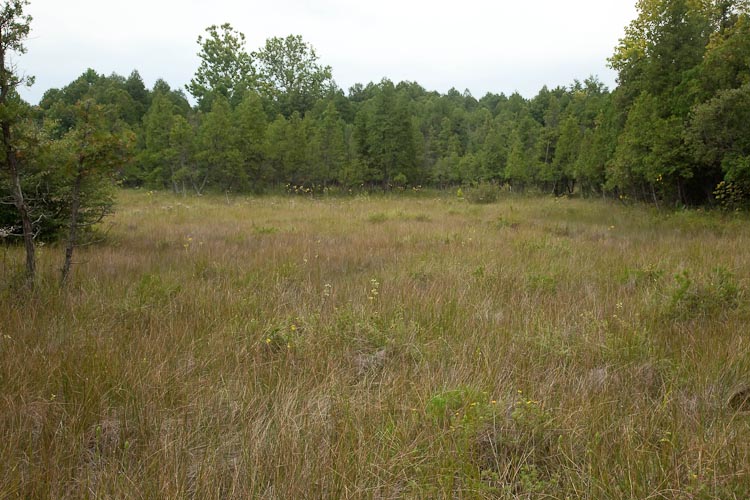
Cedar Bog (it’s a fen, not a bog) is dominated by northern white-cedar (Thuja occientalis).
Closer to home (for an OSU student), Thuja can be seen planted at the periphery of that little outdoor amphitheater right next to Mirror Lake.
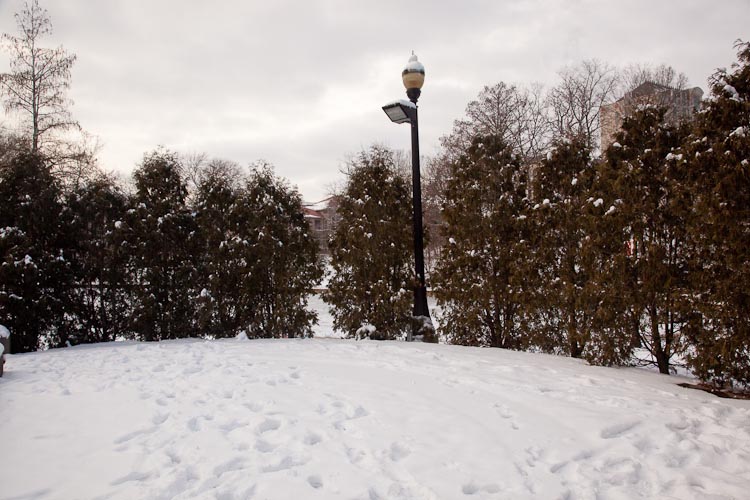
Northern white-cedar is a commonly planted ornamental small tree.
Northern white-cedar foliage is in flattened sprays, with small woody seed cones that are presented upwardly-pointed (erect).
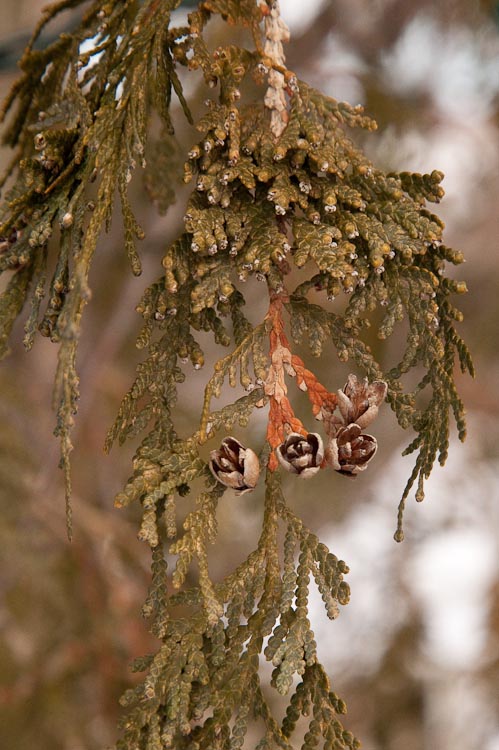
Northern white-cedar produces small erect seed cones.
The leaves of Thuja are “decussate,” meaning that they are arranged in opposite pairs that are perpendicular to one another. A further distinction is that the upper and lower leaves are flat, but the lateral ones are folded over, clasping the upper and lower ones. It reminds me of someone holding a big hamburger with both hands: the buns are the flat upper and lower leaves, while the hamburger-holder’s fingers and opposable thumbs represent the folded side leaves.
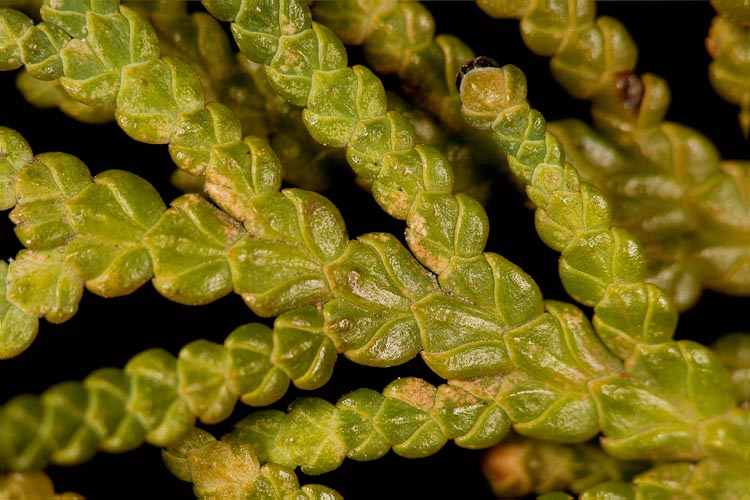
Northern white-cedar leaves are scale-like, in overlapping oppositely arranged pairs.
Scanned Image from an Old Book
(Flora of West Virginia, by P.D. Strausbaugh and Earl L. Core)
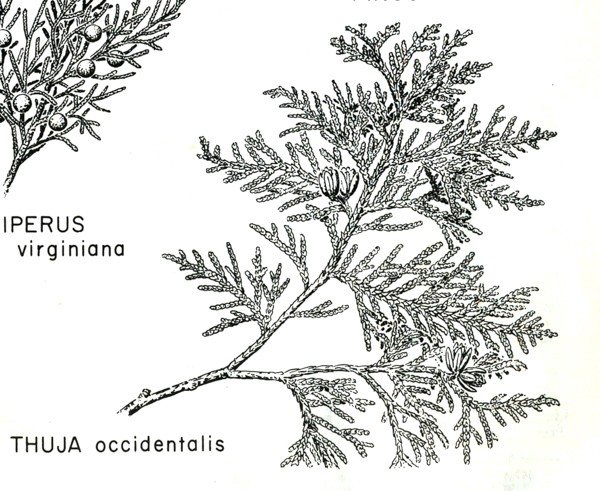
northern white-cedar
